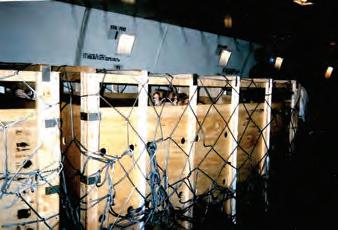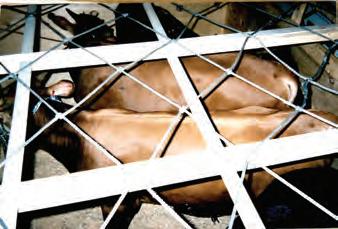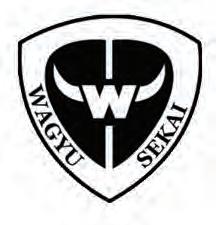
3 minute read
BIDDING INFORMATION NOTES
DLSM ONSITE SALE DAY REP: Emily Gibson-MacTavish: 519-440-9907

Advertisement







An animal’s breeding value is its genetic merit, half of which will be passed on to its progeny. While we will never know the exact breeding value, for performance traits it is possible to make good estimates. These are called Estimated Breeding Values (EBVs). The EBV is, therefore, the best estimate of an animal’s genetic merit for that trait. EBVs are expressed as the difference between an individual animal’s genetics and the genetic base to which the animal is compared.
Accuracy
An accuracy value is presented with every EB and gives an indication of the amount of information that has been used in the calculation of that EB. The higher the accuracy, the lower the likelihood of change in the animal’s EBV as more information is analysed for that animal or its relatives.
• Less than 50% = Low accuracy and should be considered a preliminary estimate. The EB could change substantially as more performance information becomes available.
• 50 - 74% - Medium accuracy, usually based on the animal’s own records and pedigree.
• 75 - 90% = Medium-high accuracy and usually includes some progeny information. Becoming a more reliable indicator of the animal’s value as a parent.
• 90% and above = High Accuracy
BIRTH
GL: Gestation Length EBV (days) is based on Al records. Lower (negative) GL EBVs indicate shorter gestation lengths which generally relate to lighter birth weights and easier calving.
BWT: Birth Weight EBV (kg) is based on the measured birth weight of animals, adjusted for dam age. The lower the value the lighter the calf at birth and the lower the likelihood of a difficult birth. This is particularly important when selecting sires for use over heifers calving at 2 years of age.
Growth
200-Day Milk EBV (kg) is an estimate of an animal’s milking ability. For sires, this EBV is indicative of their daughter’s milking ability as it affects the 200-Day weight of their calves.
200: 200-Day Growth EBV (kg) is calculated from the weight of animals taken between 80 and 300 days of age. Values are adjusted to 200 days, and dam age. This EBV is the best single estimate of an animal’s genetic merit for growth to early ages.
400: 400-Day Weight EBV (kg) is calculated from the weight of progeny taken between 301 and 500 days of age, adjusted to 400 days and dam age. This EBV is the best single estimate of an animal’s genetic merit for yearling weight.
600: 600-Day Weight EBV (kg) is calculated from the weight of progeny taken between 501 and 900 days of age, adjusted 10 600days and for dam age. This EBV is the best single estimate of an animal’s genetie merit for growth beyond yearling age.
Fertility
SS: Scrotal Size EBV (cm) is an indicator of male fertility in regard to semen quality and quantity in Western cattle breeds. Higher (positive) EBVs indicate higher fertility. There is also a favourable genetic relationship with age of puberty in female progeny. The relationship between scrotal size and fertility in Wagyu is assumed, but not proven.
Carcass
Carcass Weight EBV (kg) is based on abattoir carcase records and live weight measurements (particularly at 600-Day weight) and is an indicator of the genetic differences in carcase weight at the industry average slaughter age of 990 days. Larger positive values are more favourable.
EMA: The EMA EBV (cm2) estimates genetic differences in eye muscle area at the 12/13th rib site of a 420kg dressed carcase. More positive EBVs indicates larger eye muscle area and higher retail beef yields. Ultrasound, Aus-Meat and Japanese Digital Image Camera measurements contribute to this EB.
RUMP FAT: The Rump Fat EBV (mm) estimates the genetic differences in fat depth at the P8 site of a 420kg dressed carcase. More positive EBVs indicate more subcutaneous fat and earlier maturity.
RBY: The Retail Beef Yield Percent EBV (%) estimates the gentic differences in total (boned out) meat yield as a percentage of a 420kg dressed carcase. A more positive EBV indicates higher percentage yield for the 420kg carcase weight.
Marble Score EBV: The Aus-Meat Marble Score is an estimate of the genetic difference in the Marble Score in a 420kg carcase. Marble Score EBVs utilise the Aus-Meat Marble Score scale of 1 to 10, where 10 is equivalent to 9+. Where results from the Japanese Digital Image Camera are available, marbling percentage and fineness are also used to calculate Marble Score EBVs. Larger postitive values are more favourable.
Marble Fineness EBV: (Marbling Fineness Index estimates the genetic differences in the Marbling Fineness Index (degree of fleck of marbling fat) as measured by the Japanese Digital image Camera. A more positive EB indicates higher levels of marbling fineness.







